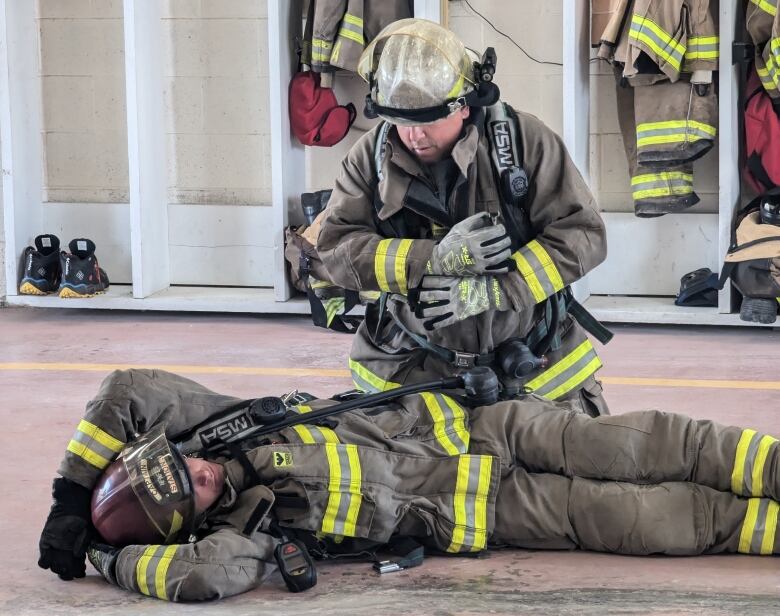Indigenous firefighters share knowledge, training and compete during annual gathering
Safe operations and cancer risks among topics discussed during three-day session.

Dozens of Indigenous firefighters from across the province were inOneida Nation of the Thames this past week working to upgrade skills aimed at serving communities that are often rural and under serviced.
The three-day annual Ontario Native Firefighter's Society Conference brought people to the territory, located west of London, to not only learn but to discuss ongoing mutual challenges.
Retention and recruitment wereimportant issues, as was access to safety equipment to prevent cancers known to impact firefighters. Another big theme was learning to make due with what's available.
"In many cases, the opportunities, the experience and the skill levels that are possible, because of lack of access to training, puts firefighters in a situation where you have to do what you can with what you've got," said Saugeen First Nation's Ashley Russel-Taylor, one of the lead instructors at the conference.

Russel-Taylor's Thursday training sessions focused on best response practices when resources and manpower are scarce, demonstrating scenarios involving hose handling and ladder operations.
He also led a tutorialof the most effective way to extract a firefighter injured while inside a burning house, includingthe best way to approach the firefighter, communicate with the team outside the house, ensure the firefighter's equipment is secure and correct technique to pull the firefighter from the building.
It's just about growing our skills and learning some new technique that we can bring back to our community.- Timothy Johns, Garden River First Nation
These tactics and connections were invaluable to Timothy Johns who had travelled 10 hours to Oneida territory from Garden River First Nation, just outside Sault Ste Marie.
"We try to participate every year if we can," Johns said. "It's about growing our skills and learning some new techniques that we can bring back to our community."
Cancer safety a major concern
In addition to firefighting tactics, the firefighters discussed safety topics that have received less attention, particularly in an Indigenous context.
For example, firefighters are at significantly higher risk of being diagnosed with cancer due to chemical exposure in burning buildings. Also,chemicals used in the fireproof uniforms they wear can be carcinogenic.

Participants learned best practices, during and after a fire response, to reduce exposure to cancer-causing chemicals.
A March 2022 study by Cancer Care Ontario showed a statistically significant increase in the rate of testicular cancer, melanoma, prostate cancer, colon cancer and non-Hodgkin lymphoma amongfirefighters.
In 2023, the Ontario government expanded its cancer coveragefor firefighters, increasing access to support for thyroid and pancreatic cancers.
Russel-Taylor said this is a topic that has come to the forefront in the last 10 to 15 years, relatively recently considering the fact that some fire services are decades older than that.
He said awareness, tracking and reporting of cancer statistics is lowamong Indigenous fire services, which are mostly made up of volunteer firefighters. He said it increases the chances of an Indigenous firefighter developing cancer that goes unrecorded, making it difficult to receive assistance.
"There are a lot of people who are acting unprotected in that range," Russel-Taylor said not that volunteers will often relyon their communities for protection.
The final day of the conference included a firefighting competition which gave firefighters an opportunity to test their skill against each other in a competitive environment.
LISTEN | Indigenous firefighters get into the challenges of their work













_(720p).jpg)


 OFFICIAL HD MUSIC VIDEO.jpg)
.jpg)



























































































